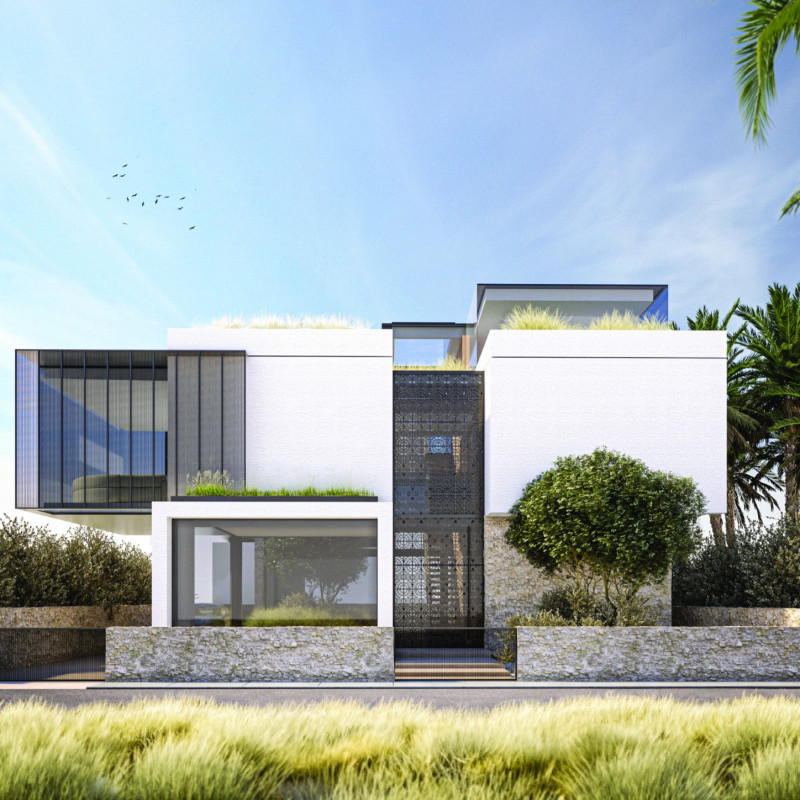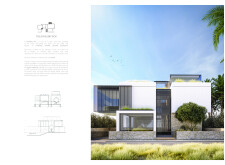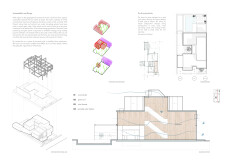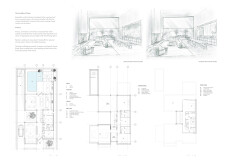5 key facts about this project
### Project Overview
Located in Dubai, the design known as "The Jewellery Box" incorporates modern architectural aesthetics with a functional living environment. The project prioritizes sustainability through the use of organic materials sourced from the surrounding region, enhancing its contextual relevance. Conceptualized around the metaphor of a jewelry box, the residence is intended to encapsulate and showcase valued personal belongings, reflecting a lifestyle that balances elegance with simplicity.
### Materiality and Structural Strategy
The design integrates locally sourced materials to mitigate ecological impact while referencing Dubai's architectural heritage. Limestone is chosen for its durability and aesthetic appeal, while cement and wood contribute to both structural integrity and warmth. Glass is utilized strategically to provide expansive views and maximize natural light, thus reducing reliance on artificial illumination. The structural framework features a steel grid system that allows for future expansions, ensuring adaptability in response to changing family needs.
### Sustainability and User Experience
Sustainability is a core principle of the project, exemplified by the installation of solar panels, which lower energy costs and minimize environmental impact. A wind catcher aids in passive ventilation, while operable solar shaders empower residents to control light and thermal comfort. The inclusion of a green roof enhances temperature regulation and fosters biodiversity, while an ergonomically designed interior promotes connectivity among public and private spaces. Notable features include smart home technology, which facilitates functional adaptability, exemplified by retractable walls in the kitchen area. The design promotes an indoor-outdoor lifestyle, seamlessly merging living spaces with the surrounding greenery.






















































